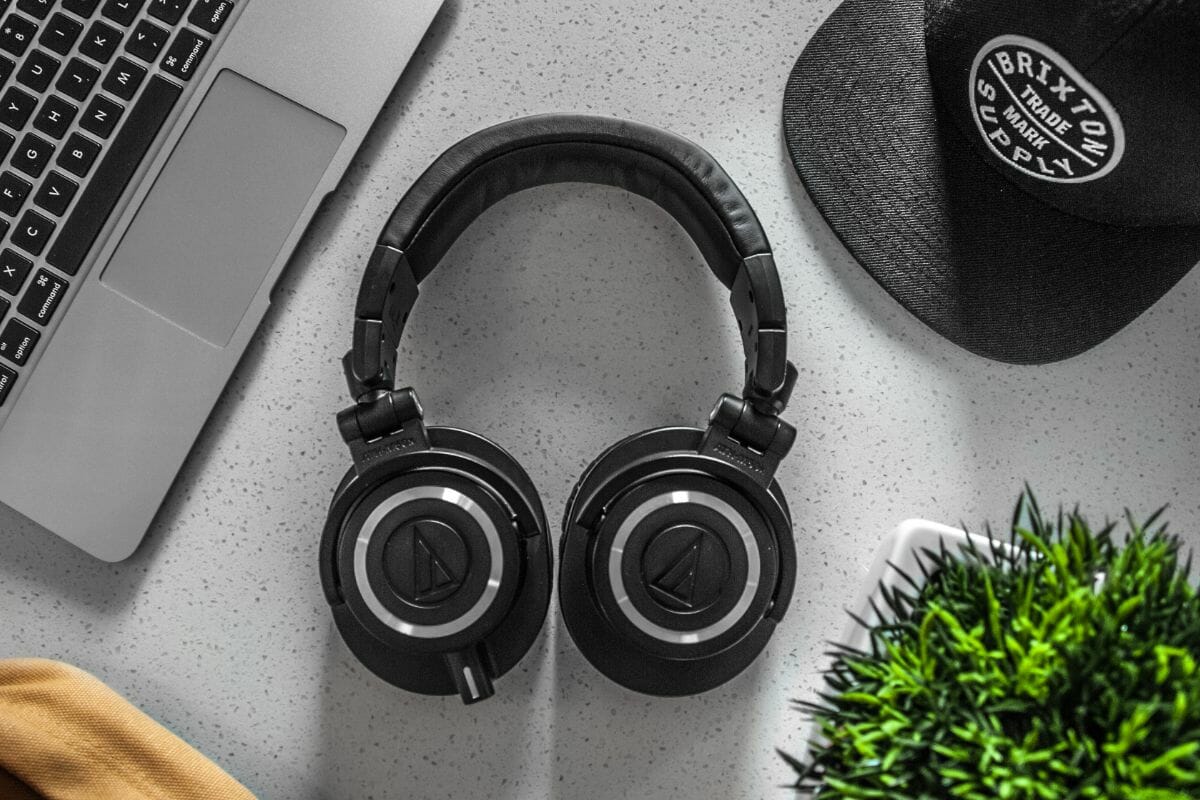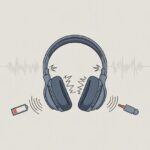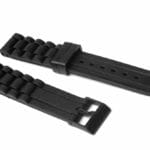Broken headphones are one of the most frustrating things that many of us encounter every day.
Whether you love listening to music on your commute, or you need your headphones for work, if your headphones have stopped working, you’re probably desperate for easy fixes.

In this guide, we’re going to cover the main reasons why headphones break, and how to fix them when they do.
Checking Whether Your Headphones Are Broken
Before you start trying to diagnose what’s wrong with your headphones, try plugging them into different sources to make sure the issue isn’t with your device.
If the audio you’re playing through your headphones isn’t the best quality, you may also want to try playing higher-quality audio and seeing if you can hear it.
Broken Headphones Symptoms And Fixes
No Sound (Bluetooth)
One of the clearest signs of broken headphones is no sound coming through, regardless of what audio source they’re connected to.
Now, if your headphones have a wire, this could be a sign of many different issues, but when it comes to Bluetooth headphones, most of the time, one of two things is the cause: either you need to adjust your settings or do some troubleshooting, or you need to update your phone or audio driver.
First, reset your Bluetooth headphones. Hold down the power button for a couple of seconds and wait for the LED indicators to turn off. Hold the power button again to turn your headphones back on.
If this doesn’t work, check the audio settings on your device. Is the volume turned all the way up? Do you have the correct audio output selected?
If so, you’ll need to do some troubleshooting. It’s worth running the troubleshooter on the device your headphones are connected to. This should diagnose any issues with your Bluetooth connection and give you steps to resolve the problem.
You can also try updating your Bluetooth drivers in case they are outdated. On a Windows device, you’ll need to select your audio output device in Device Manager and choose to update your drivers from here.
Sound From Only One Ear
Sound coming from only one side of your headphones usually means that either your audio is not properly balanced, or your headphone wire is damaged.
First, check the sound balance. Go into your sound settings, and select the correct audio output device. On a Windows device, you should find a tab called ‘Levels’, in which you can click on ‘Balance’. From here, you can make sure that the slider is directly in the middle of Left and Right.
If this doesn’t work, make sure Sound Enhancements are disabled. Sound Enhancements can make for a great audio experience, but they can also alter the frequencies, and this often results in a loss of sound on one side.
Choose ‘Sound’ from your settings menu and click on ‘Advanced’. This should lead you to ‘More sound settings’. Choose your output device, and under the ‘Advanced’ tab, look for ‘Enable audio enhancements’. If this is checked, uncheck it.
Updating your drivers is the next logical step if the above fixes have not worked. You can do this from ‘Device Manager’ on a Windows device. Just select ‘Sound, video, and game controllers’, pick your output device, and choose ‘Update driver’.

Sound Distortion/Static/Echoing
There are numerous kinds of sound distortion you might experience when using headphones. Maybe the sound is just garbled, or maybe it echoes. Sometimes, you might hear static.
Static can be caused by dirty headphone jacks, so firstly, clean your headphone jack if you’re hearing this, or any other kind of sound distortion.
If that doesn’t work, or if you’re using wireless headphones, it could be an issue with your connection. Try turning off any microwaves, Wi-Fi modems, or fluorescent lights, and ensure there isn’t a wall or another barrier between the headphones and the audio source.
If your issue is echoing specifically, try turning your volume down a bit, especially if you’re only hearing the echo when on a call. Moving the microphone away from you can also help.
In case none of this works, run the troubleshooter on your device for diagnostic help.
Sound distortion can also be caused by physical damage to your headphones, such as blown-out drivers or speakers. If you have a new headphone driver on hand and want to investigate, disconnect the headphones and turn them off fully.
Remove one ear pad and take out the screws holding the speaker. Cut around the edges of the speaker to remove it, disconnecting the wires with a soldering iron. Use the soldering iron again to connect the new driver and replace the other components.
Damaged Headphone Jack
If your headphone jack is visibly dirty or damaged, it can cause a lot of sound issues. Cleaning your headphone jack is one of the most underrated fixes for audio issues when using wired headphones.
However, if your headphone jack is bent to the point where you’re struggling to plug it into your device, you’ll need to (very carefully) try to straighten it again.
You will need some small pliers to hold the end of the plug, and another pair for the middle section. Firmly grip both pliers and carefully apply pressure to restore the original shape of the jack. Don’t use too much force, or you might make the issue worse.
Your headphone jack might not be bent, but it might be loose, causing connection issues. If you think that might be the case, and you’re sure the plug is definitely the right size, clean your headphone jack to get rid of debris and corrosion. It’s also worth removing your phone case in case it’s somehow obstructing the jack.
Final Thoughts
There are many potential causes of seemingly broken headphones, but luckily, a lot of them can be fixed by simple steps like cleaning the jack or checking audio settings.
Sometimes, you might need to run the troubleshooter on your device or physically take apart your headphones to diagnose the issue.
- Why is my fitness tracker not showing Instagram notifications? Is It On a Social Media Detox? - November 24, 2025
- Why do my Bluetooth headphones not connect to multiple devices? The Sad Tale of Gadget Jealousy - November 23, 2025
- Smartwatch Error Code 4001 Fix: Why Your Wrist Wants a Timeout - November 23, 2025






